I promised myself that I wouldn’t write about the chess drama any more after my last piece. Unfortunately, I then got distracted by the tranny, Yosha Iglesias, and his incredibly idiotic “evidence,” of Hans Niemann cheating. I spent far too long debunking this personally, and so I figured I might as well write about it and turn it into content.
First of all, I am deeply sorry for exposing you to this viscerally repulsive character. I understand that his uwu tranny schtick makes him difficult to watch, so I’ve taken it upon myself to watching for you, and transcribing the results. But before that, who is Yosha Iglesias?
This month, Jennifer is joined by FM Yosha Iglesias, a multi-talented chess professional. Not only is Yosha a FIDE Master, composer, coach, and YouTuber, she also works for chess24, and is among the top-ten female players in France (Ranked 9th in June 2022).
Jennifer and Yosha speak about how the “eureka moment” of solving a chess problem can be similar to a “eureka moment” in life — and how this manifested for Yosha in finding her gender identity.

USA Chess even provides us with a picture of the beautiful lady, replete with “her,” five o’ clock shadow.
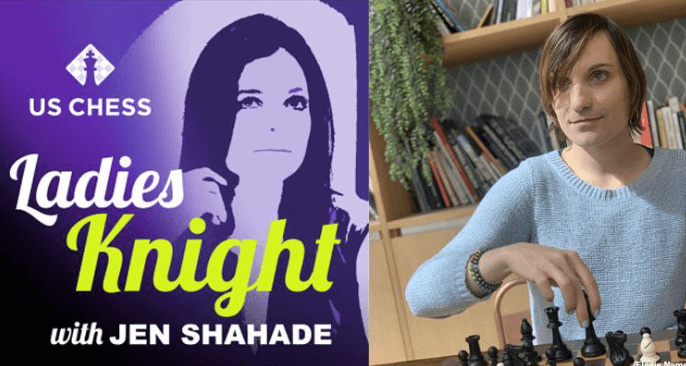
They also discuss Yosha’s own chess compositions, including this surprisingly difficult mate in one (white to move):
Mate in one, are you kidding me? Well in this case I was perhaps wrong to criticize, since it took me a very long time to figure out the mate in one.
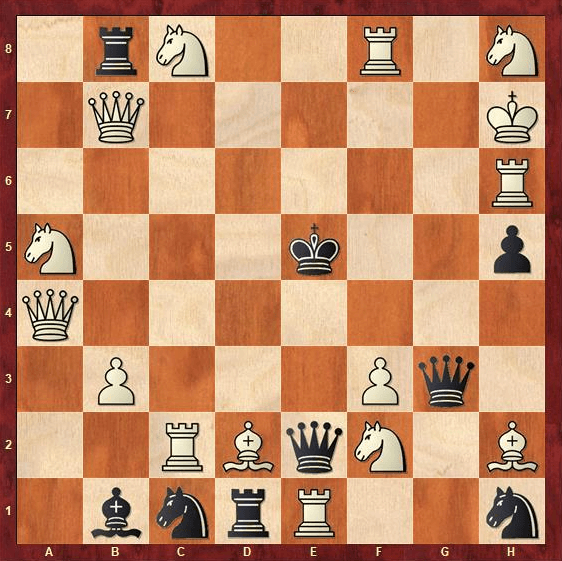
It is a very unusual check.
On her blog, Iglesias writes about why it’s important for chess organizations to have trans-inclusive policies. (See US Chess’s policy here.)
A deep thinker about gender, theory, and the game, Yosha points out that, “If men and women have equal abilities for the game of chess, the so-called ‘female category’ is justified by the numerous additional difficulties and discriminations that the players underdog because of their gender. And believe me, trans players are no more spared than other players.”

Right, that’s why he went from being a random French male player, to a top 10 French female player. It’s because men and women have equal chess abilities, but wahmens just face vague discrimination which makes them not think so good about chess. He, as a tranny, also faces the vague, unspecified forces of discrimination, which is why he… immediately parachuted to the top 10 of female players.

No, it doesn’t make any sense, but this is a guy who thinks that he’s a woman. Once you’ve accepted that, you’ve exited from realityland, and are living in your own little made up World. So sure, he’s a womxyn, and he’s faced massive discrimination somehow, as a womxyn, which is why he’s so much better than the average womxyn that he’s now in the top 10 of French womxyn’s.
It’s from this beautiful mind that we have the “the most incriminating evidence against Hans Niemann.” That’s the title of his video, not my description. The tranny starts off by looking at some games of Niemann where he supposedly played suspiciously. One of those games was the game between Hans Niemann and Mishra Abhimanyu. The tranny has this to say.
Ng4, okay you cannot take, but what’s the point of Ng4, it is to go to h2. Okay Qg3 attacks the rook, it moves, okay then white rook moves, and the knight is stuck on h2 and it’s very strange to play like this.
So you understand why I find this so baffling, here is the game.
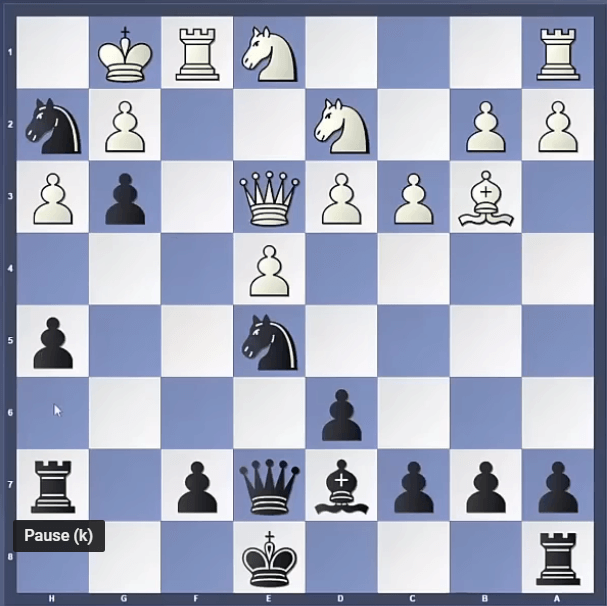
Niemann plays a forced line which starts with attacking the rook on f1, and ends with Ng6, pictured below, which wins the exchange by force.
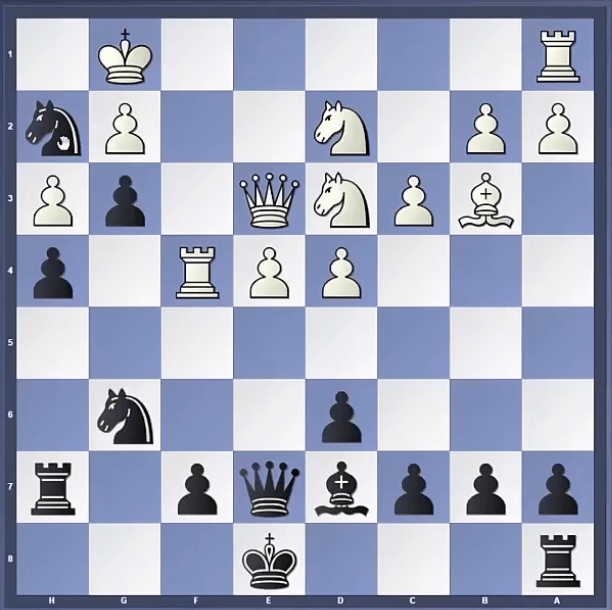
I must be living in some sort of alternate reality where winning material is “mysterious,” and “very strange,” play that is just completely inexplicable without assistance of the engines. Speaking of, I decided to throw the game’s pgn (move notation) into lichess, and this is what I got.

Hans makes five inaccuracies, according to Stockfish 14. He gave Abhimanyu a big advantage out of the opening, and threw away his advantage twice. In the below position if Abhimanyu plays Nd2, instead of the Nd6 played in the game, then he has a nice advantage over Niemann even after Niemann has won the exchange. Truly this must be the work of a cheater!
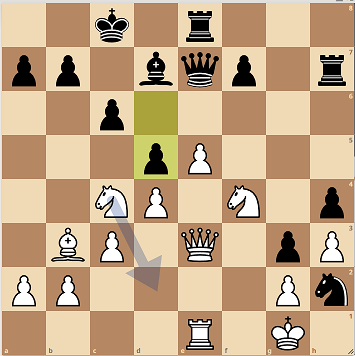
The tranny eventually admits that the relatively poor play, relative to an engine, makes these games not overly suspicious. He includes them to muddy the waters, and makes some snarky comments like those I’ve already quoted above, but the main thrust of his argument is that Niemann has multiple games that correlate 100% with engine recommended moves. If you’re thinking that’s sort vague, we’ll get there.
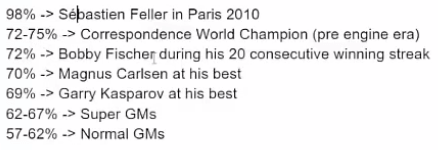
Xir uses a tool from Chessbase called the “Let’s Check,” feature. Xir then claims that the highest ever recorded engine correlation score was 98%, achieved by Sebastian Feller, a man who got caught cheating just a year later. But Feller was pre-Hans, who has scored 100% engine correlation not once, but multiple times.

First of all, before we even get into this, just think about how idiotic the claim is that Hans is literally using an engine to cheat on every single move. No one with any amount of intellect would do this, because it is totally unnecessary. If you cheated just once per game in some critical position you could achieve a massive ratings boost. Hans, as a legitimate 2700+ strength player, could probably become the World Champion by cheating on just one move per game, but xir claims that Niemann just decided against this for no particular reason, and went with the patented “obviously cheat on every single move,” gambit.
But I get it. No one else has ever scored a perfect game by this criteria before. It’s just never –
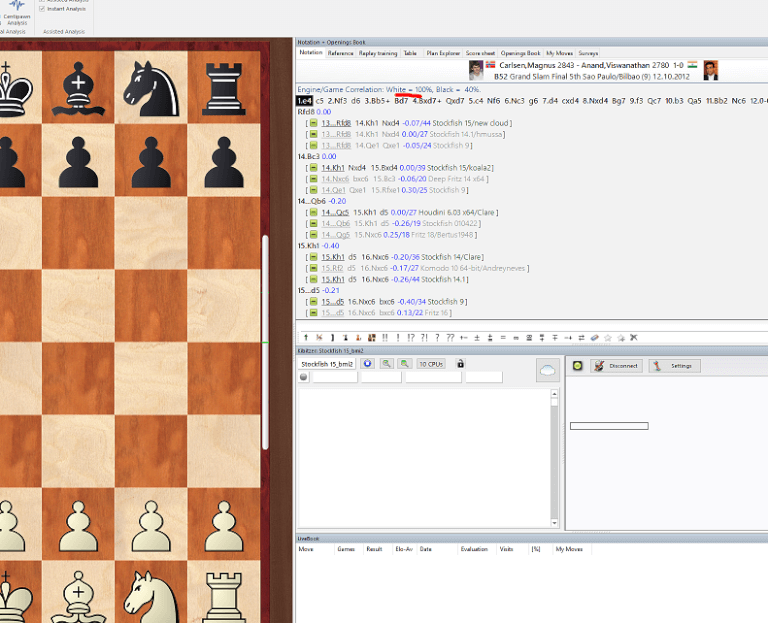
Oh, nevermind. Turns out the troon is lying, and Carlsen has scored a 100% game. He’s actually got quite a few of them, and Nakamura went along with this “evidence,” before embarrassing himself by finding one of his own 100% games during a stream.
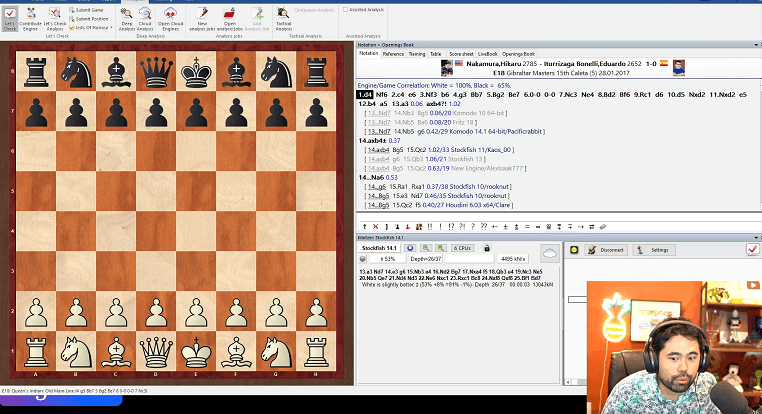
I’ll get into how the Let’s Check feature works on Chessbase, but I want to build this up more and I’m having fun.
Okay Hans’ game against Christopher Yoo. Let’s just click through the game. Hans just crushed his opponent, obviously. And, yeah, uhm, very quick victory. 22 moves. 100% correlation with the [engines] – according to chessbase.
Xir continues by claiming that Hans absolutely demolished another strong player, Christopher Yoo, by cheating on every move. Cool, let’s take a look at this game using Stockfish 14, through Lichess’ analysis tool.

Check out this perfect game where… Hans was lost out of the opening, and made a blunder and three inaccuracies in just 21 moves.

So no, Hans did not “just crush Christopher, obviously.” Hans played a fairly poor game that Yoo blundered away, with Stockfish saying that Niemann played so badly that he lost the equivalent of two pawns every five moves. This is apparently a performance that the World has never seen before. So exceptionally good that Bobby Fisher never equaled this, not one time in his entire life.

Let’s do a little fact-checking of that, shall we?
Here’s a game that Bobby Fischer played when he was 13 years old at the US Championships. And here’s the Lichess analysis.

Fischer makes three small inaccuracies in a 41 move game. He also makes multiple brilliancies like the following.

11. Bg5, Na4!
On move 11 he offers an entire knight.

15. Bc4 Nxc3!
On move 15 he again offers an entire knight for just a pawn.
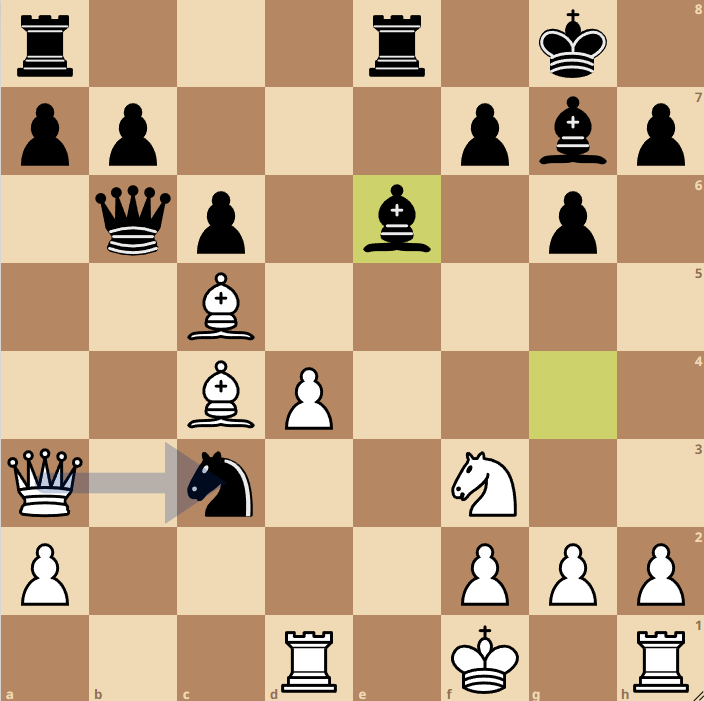
17. Kf1 Be6!!!
But all of that pales in comparison to move 17, where he offers a full queen and a knight absolutely out of nowhere! He proceeds to finish the game with perfect accuracy, and crushes one of America’s strongest players, IM Donald Byrne, checkmating him on the board in 41 moves. And it should be mentioned that these brilliant moves were all the strongest moves recommended by Stockfish 14.
There were no brilliancies in Niemann’s game against Christopher Yoo, and he made plenty of poor moves. Despite this, the troon wants us to believe that he accomplished something that has never been done before in chess. A perfect “100% engine correlated game,” apparently includes blundering into being borderline lost out of the opening before messily converting your advantage.
 To find out what’s going on, let’s take a closer look at Chessbase’s Let’s Check feature.
To find out what’s going on, let’s take a closer look at Chessbase’s Let’s Check feature.
What does “Engine/Game Correlation” mean at the top of the notation after the Let’s Check analysis?
This value shows the relation between the moves made in the game and those suggested by the engines. This correlation isn’t a sign of computer cheating, because strong players can reach high values in tactically simple games. There are historic games in which the correlation is above 70%. Only low values say anything, because these are sufficient to disprove the illegal use of computers in a game.
The line “suggested by the engines,” wasn’t bolded by me, but is actually the most important part of their blurb. Because it turns out you can have multiple engines taking a look at the game.
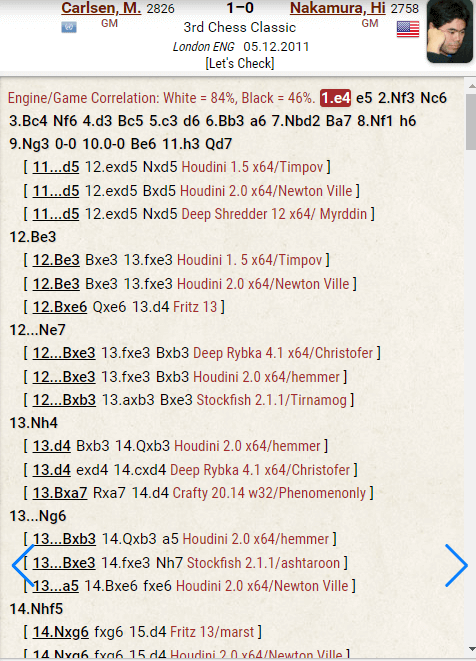
Above we see a game between Magnus Carlsen and Hikaru Nakamura from 2011. Carlsen has a “84% engine correlation,” while Nakamura is at 46%. But what does that actually mean?

What it means is that an arbitrary number of engines were thrown at this game. If any of those engines, running at some unknown depth, spits out the move that the player played as the top move, then this counts as “100% engine correlation,” for that move.

You can see for yourself just how many engines were used when analyzing this game. We have Houdini 1.5, Houdini 2.0, Deep Shredder 12, Fritz 13, Deep Rybka 4.1, Stockfish 2.1.1, Fritz 13 running on a different computer (at different depth), Komodo 32, Crafty 20.14, and possibly others. That’s at least nine engines used to analyze this game, and you are allowed an arbitrary number.
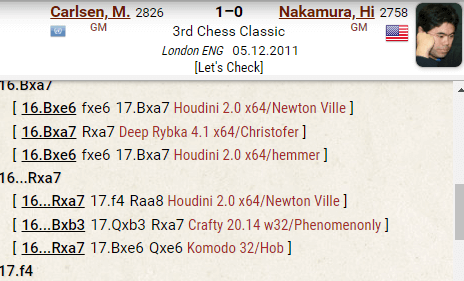 Many times these engines will agree with each other. Other times they won’t. Throw enough engines at a game, especially with a wide gap in strength, and you’re more likely to “discover,” that the game has 100% perfect engine correlation. With that in mind, what do you think the troon did when “discovering,” that Niemann’s games have a very high percent of 100% engine correlations?
Many times these engines will agree with each other. Other times they won’t. Throw enough engines at a game, especially with a wide gap in strength, and you’re more likely to “discover,” that the game has 100% perfect engine correlation. With that in mind, what do you think the troon did when “discovering,” that Niemann’s games have a very high percent of 100% engine correlations?
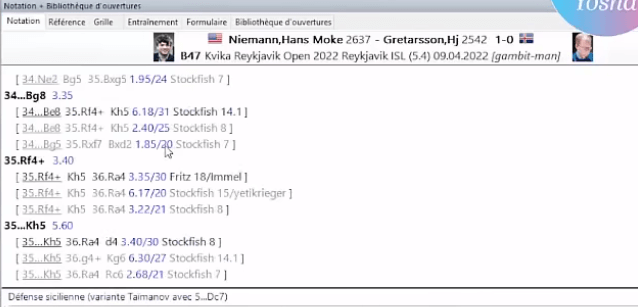

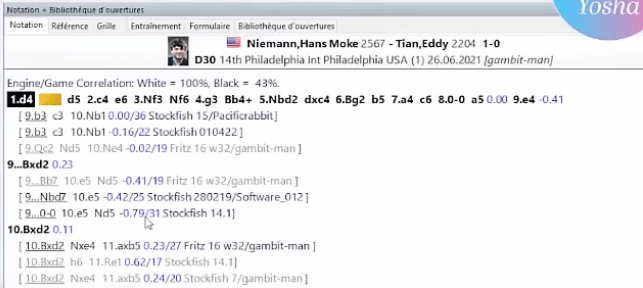

You guessed it, he threw a whole bunch of engines, and most importantly many weak engines, at Hans’ games, and found out, surprise surprise, that many of the games had at least one engine approve of every single move that Hans made. In just the above we see Stockfish 7, 8, 14.1, 15, and some weird versions like “280219/Software_012”. We see Houdini 6.03, Fritz 16, and Fritz 18.
Yosha Iglesias, the troon “analyist,” flips through the games so quickly you need to go frame by frame to catch all of the engines used. You might not even be able to do that, and instead need your own chessbase account, which costs hundreds of dollars per year, to check the games directly. Luckily, some people have already taken a look at the engines used and found the following.
Reddit (yeah, I know):
By my count she used close to 25 engines for Hans’s games.
Stockfish 11
Stockfish 10
Fritz 11
Stockfish 13
Komodo 14
Stockfish 12
Fritz 16
Stockfish 15
Fritz 16 w32
Stockfish 14.1
Stockfish 7
Komodo 10.2 Fritz 11 SE
Deep Fritz 14
Fat Fritz 2
Deep Fritz 13
EngineUnknown=0? <<<< wtf is this… all of these correlations were end game with no other engine showing best move.
Komodo 12 64 bit
Stockfish 7
Houdini 5.01
Fritz 17
Stockfish 170121
Houdini 6.03
Deep Hiarcs 15.0
Deep Fritz 14
These are only the engines that had a correlation to a move from his game. It’s possible that she could have use 50 or 100 engines, lol. We don’t know.
Interestingly, for the Carlsen v Nepomniachtch game she analyzed, I noted far fewer engines and the engines were typically SF15 or NN derivatives. Did she use different engine sets and perhaps that would explain the lack of correlation?
And another commenter explains what I already did WRT chessbase Let’s Check analysis.
The whole thing is easily debunked. There are 2 arguments that need to adressed.
The methodology for getting a 100% score.
You get a 100% score if all your moves was the top 1 choice of at least one of the engines used to analyze the position. If you look through her video you will see there’s at least 25 unique engines used when analyzing Hans’ games(wtf!). just look at the moves in the video and it says the name of the engine that had his move as the top choice, you will see 25+ different engines. Every move Hans makes is compared to 25+ different computers top move and if it matches up with just one of them then he gets a 100% on that move.
Iglesias is either a moron, or deliberately defrauding the public. With trannies, anything is possible, and he and his neo-vagina have doubled down on this kindergarten tier analysis.




Once again, the reason why Niemann has so many more “100% correlation games,” is simply because a more and weaker engines were used to analyze his games. Then people go and use a small number of very strong engines to analyze Carlsen games, or that of other 2700+ players, and find that they have fewer 100% correlation games. Even still, they don’t have none, which was the original smoking gun claim, something that was picked up by the media.

But remember back when I talked about Kenneth Regan, the statistics professor and Fide Master who claimed that there is no evidence of Hans cheating in over the board (OTB) games? Don’t worry, xir has some truly genius insights as to how someone could fool his anti-cheating algorithm.


What follows is a great example of Dunning-Kruger, where someone who has absolutely no idea what they’re talking about decides to loudly bloviate anyway.
Twitter thread:
I read and watched many things about Ken Regan’s anti-cheat algorithm, here is how I think a cheater could easily beat it. Not at all a mathematician, so if I’m mistaken, just prove me wrong.
Suppose a player who is 2500 without cheating and 2700 when cheating because they don’t cheat on every move during games where he cheats. (a bit like Rausis…) The trick is simply to flip a coin before every game to decide whether to cheat or not.
On average, they would play like a 2600. The number of games they cheat during a tournament would follow a normal distribution. The same as their z-score and ROI. So Ken Regan would not be able to detect them, will he? He would just think they are a normal 2600, won’t he?

You see that buddy, you just cheat on roughly half your games, and then you’ve totally fooled the algorithm, because in Iglesias’ bizarro alternate reality Regan looks at tournaments, and not games, for no particular reason. This isn’t what Regan does, and for good reason, but it’s what he needs to do in order for this garbage fraudulent analysis done by a troon to even have a hope of being correct.
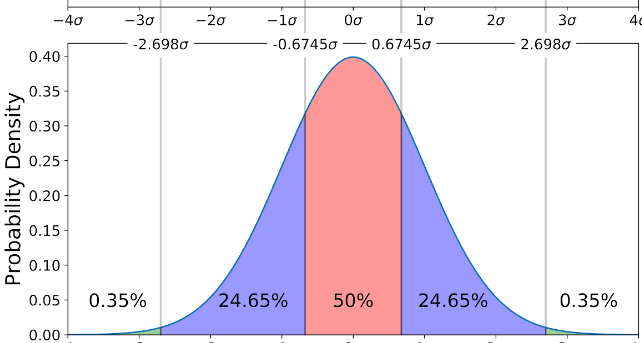
If someone flipped a coin and cheated in a game based on the result their game by game strength would not follow a normal distribution. You would instead have two peaks, with a valley in between them.

A visual display of the differences superimposed onto each other is below.
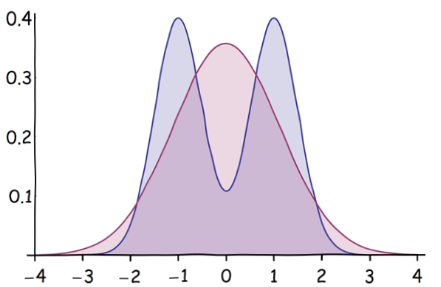
Shockingly, the troon does not appear to understand statistics better than the statistics professor. I’m not one to make appeals to credentialism, but come on now, this is absurd.
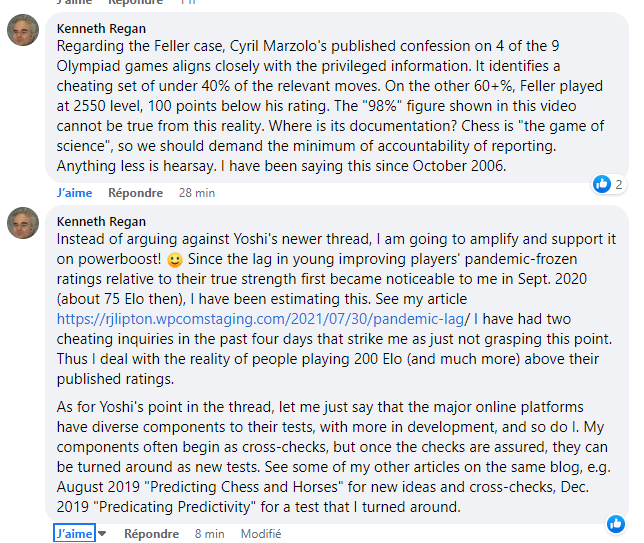
This is the third time that I’ve finished an article with something along the lines of “this will be the last time I write about chess,” but in this case it’s true. I can’t justify spending any more of my time on this, but I had to get this out there onto the page because it is so far beyond ridiculous.
Hans Niemann cheated online, and that’s plenty reason for the chess world to hate him, and I’m not all that interested in defending him for his own sake. Having said that, what’s happening here is absurd. The chess world champion has a bitchfit after losing to him in a game where Hans obviously did not cheat. He drops out of the tournament, which screws over the organizers and some other players. He doesn’t release a statement, and then ragequits a game against Niemann in a different tournament weeks later, screwing over other players who potentially could have lost a playoff spot to Niemann. Eventually he does release a statement, only this statement has no real proof other than “I have a hunch he cheated more online than he said, and I wasn’t really vibing with him when we played OTB.”
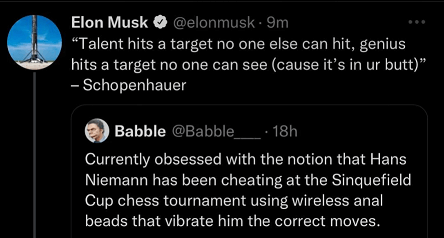
There’s no real evidence presented, so after people get done suggesting how Niemann could have cheated with remote controlled anal beads, a tranny takes it upon xirself to do the World’s Most Obviously Dishonest Analysis of Niemann’s games. Xir chucks a bunch of engines with wildly varying strength at Niemann’s games in order to conclude that Niemann cheated for 100% of his moves against many opponents, even though this would be unnecessary to win and lead to him being easily caught by pretty much anybody.
But hey, no one has ever had 100% games, according to this obscure and opaque analysis tool provided by Chessbase, so that proves he’s cheating. We then immediately find out that Carlsen and Nakamura also have 100% games. But hey, Niemann has more, so he’s still cheating. Well he only has more due to the fact that his games were asymmetrically analyzed by many more engines including the mystery “unknown engine,” which was the only engine to match with many of his endgame moves. But if a troon who doesn’t understand basic statistics says that he cheated then he cheated.

That’s it, no more. I’ve said what I needed to say on the bitchfit happening in the surprisingly catty world of chess. I promise you, only important things from here on out.















Answer you posted is I correct – it’s rook to C5.
It’s Qa1#. The rook is pinned to the king.
Ha, yes
Your chess articles are some of your best, keep em coming!
I know fuck all about chess, butI can spot a jew a mile away. I’m confused why you give a fuck about the Niemann. But I’m sure it’s his “hawaiian” ancestry that gives him his “unique” look, amirite?
I’m going to have to strongly disagree here. Just watch this clip of him.
https://www.youtube.com/watch?v=J4x2D65RL8I&t=317s&ab_channel=ASMRChess
“-some miracle, I had checked this today. It’s such a ridiculous miracle that I don’t even remember why I checked it.”
Come on. Where have we heard this countless times? “By some miracle, I survived the chamber by holding my breath!”. “By some miracle, they didn’t have enough gas that day.” “By some miracle, they took me out of the line”. “By some miralce, we went left rather than right, and it was the people on the right who were sent to the chamber.”
It’s the classic argument. The quintessential “how do I explain this bullshit?” “OH IT’S A MIRACLE!” He cheated. How? Don’t know, but he did something against the rules. The video claims that perhaps a member of Magnus’ own team informed Niemann of Magnus’s opening. Wow, where have we seen that before? Men getting stabbed in the back, by two colluding people of the same background? This is CLASSIC JQ.
And look how the Chess company are treating it. Niemann says “I met with Danny Rensch at Miami. Danny Rensch is the person who confronted me, and I am deeply deeply indebted to him for handling the ban privately and giving me the chance to redeem myself.” Look at this special treatment. Personal visits in Miami? Private matter? Come on.
“IT WAS MIRACLE! I LOOKED UPON THE EXACT RARE STRATEGY MY OPPONENT WAS ABOUT TO USE THAT VERY MORNING. HAD I GONE LEFT RATHER THAN RIGHT, WHEN BROWSING CHESS STRATEGIES, I WOULD HAVE LOST THE GAME.”
It’s laughable. I just find it amazing that this same excuse is used to this very day. ‘Muh Miracles’.